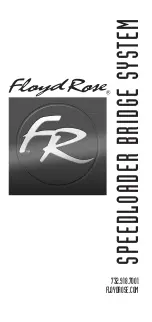
20
TM30 User Manual v. X1.0
7.5.2 Preliminary inspection of the target area
As a first step it is always recommendable to perform a systematic inspection at
the cable assembly area, assembly method as well as fault type.
When and how the fault appeared
-
Did it blow a fuse (short circuit)
-
Did the cable just stop heating (cut cable)
-
Did a residual current device trip (ground leak)
-
Have there been renovation or other changes going on at the target area, such
as added furniture or drilled holes before the fault. As faults may appear quite a
long time afterwards, knowledge of previous renovation history may help too.
Measure cable resistances and capacitances
-
Make sure that cable wires are not live and disconnect all from the feeding cable.
-
Measure resistances and capacitances between all heating cable wires and shield
and compare them to normal values of an intact cable:
o
Phase / neutral
o
Phase / protective earth
o
Neutral / protective earth
-
As it possible that heating cable is shorted to concrete reinforcement, it is worth
measuring all wires against the building’s earthing too.
-
Resistance values usually reveal the fault type and which wires are affected.
Capacitances may help defining the fault distances from the measuring point.
Define the heating cable route
-
Follow the route of the heating cable from start to end as explained in paragraph
7.5.3 and carefully mark the route on floor. Often the exact route may reveal
faults due to bad assembly or later renovations, such as:
o
Cable has been placed under fixed furniture like closets
o
Sauna stove or bench screws have been inserted too close to the cable
o
Toilet seat screws hit the cable route
-
If the fault can’t be determined by following the route only, it is necessary to try
to find spots along the route where the tracing signal level suspiciously changes
(see paragraph 7.5.3):
o
In case of a short circuit, signal usually can be followed till the fault spot
where it get stronger and then quickly weakens or disappears.
o
In case of an open circuit, signal usually starts to weaken starting from the
fault spot, but change is less distinct.
7.5.3 Tracing floor heating cables and their faults
Task: Floor heating cable route needs to be traced e.g. for defining a
fault location or for drilling holes to safe spots.
-
Make sure that cable wires are not live and disconnect all from the feeding cable.
-
There are two possible methods to trace the cable route and it depends on the
target which one works best.
-
It is advisable to mark the route to the floor with chalk or tape.
Содержание TraceMeter TM30
Страница 1: ...Cable Wire Tracer TraceMeter TM30 User manual v X1 0 ...
Страница 2: ...1 TM30 User Manual v X1 0 ...








































